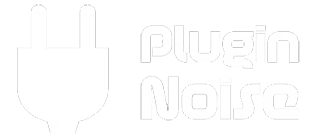J
jason
Guest
Field recordings are one of the most versatile tools in a sound designer's arsenal. From the rustling of leaves to the hum of city life, these sounds can add depth, texture, and realism to your projects. But how do you capture and use them effectively? This thread is your guide to making the most of field recordings in your sound design workflow.
 Why Field Recordings?
Why Field Recordings?
Field recordings bring a unique, organic quality to your sound design. Unlike synthetic sounds, they carry imperfections, irregularities, and a sense of place that’s hard to replicate.
 Applications:
Applications:
 Tools of the Trade
Tools of the Trade
You don’t need a Hollywood budget to get started—just the right gear and a bit of creativity.
 Microphones:
Microphones:
 Extras:
Extras:
 Finding Sounds in Everyday Life
Finding Sounds in Everyday Life
Field recording isn’t just about exotic locations—you can find inspiration everywhere.
 Urban Environments: Record traffic, conversations, or construction noise for industrial vibes.
Urban Environments: Record traffic, conversations, or construction noise for industrial vibes.
 Nature: Capture bird calls, rustling leaves, or waves for serene ambiences.
Nature: Capture bird calls, rustling leaves, or waves for serene ambiences.
 Household Objects: Record creaks, clicks, and clatters for Foley or abstract soundscapes.
Household Objects: Record creaks, clicks, and clatters for Foley or abstract soundscapes.
 Pro Tip: Always carry your recorder—you never know when inspiration will strike!
Pro Tip: Always carry your recorder—you never know when inspiration will strike!
 Processing Field Recordings
Processing Field Recordings
Raw recordings are just the start. Post-processing unlocks their full potential.
 Clean Up:
Clean Up:
 Manipulate:
Manipulate:
 Layering:
Layering:
Combine multiple field recordings or blend them with synthesized elements for a richer sound. For example:
 Organizing Your Library
Organizing Your Library
Building a personal sound library is a long-term investment.
 Catalog Your Sounds:
Catalog Your Sounds:
 Pro Tip: Tools like Soundly or BaseHead can streamline sound library management.
Pro Tip: Tools like Soundly or BaseHead can streamline sound library management.
 Creative Uses for Field Recordings
Creative Uses for Field Recordings
Field recordings aren’t just for ambience—they can be the foundation of creative sound design:
 Musical Textures: Turn recordings into playable instruments using samplers like Kontakt.
Musical Textures: Turn recordings into playable instruments using samplers like Kontakt.
 Foley Effects: Use everyday sounds to enhance realism in film or game audio.
Foley Effects: Use everyday sounds to enhance realism in film or game audio.
 Abstract Soundscapes: Combine processed recordings to craft unique audio environments.
Abstract Soundscapes: Combine processed recordings to craft unique audio environments.
Let’s Talk Field Recording!
 What’s the coolest sound you’ve recorded in the wild?
What’s the coolest sound you’ve recorded in the wild?
 Do you have a go-to trick for processing field recordings?
Do you have a go-to trick for processing field recordings?
 Share your favorite plugins or tools for working with field recordings!
Share your favorite plugins or tools for working with field recordings!
Field recordings can breathe life into your projects, so get out there, hit record, and let your surroundings inspire you!
Field recordings bring a unique, organic quality to your sound design. Unlike synthetic sounds, they carry imperfections, irregularities, and a sense of place that’s hard to replicate.
- Create immersive ambiences for film, games, or podcasts.
- Transform everyday sounds into abstract textures.
- Layer with synthesized sounds for depth and realism.
You don’t need a Hollywood budget to get started—just the right gear and a bit of creativity.
- Zoom H1n ($120): Compact and beginner-friendly.
- Tascam DR-40X ($180): Versatile with multiple input options.
- RØDE NTG2 ($270): A shotgun mic for capturing focused sounds.
- Windshields/Deadcats: Essential for outdoor recording.
- Headphones: Use closed-back headphones to monitor your recordings (e.g., Audio-Technica ATH-M50X).
Field recording isn’t just about exotic locations—you can find inspiration everywhere.
Raw recordings are just the start. Post-processing unlocks their full potential.
- Use noise reduction tools like iZotope RX to remove unwanted hums or wind noise.
- Apply EQ to enhance or suppress frequencies.
- Stretch or pitch-shift recordings for surreal textures.
- Use granular synthesis (e.g., Granulator II) to break sounds into evolving layers.
- Add reverb or delay to create depth and atmosphere.
Combine multiple field recordings or blend them with synthesized elements for a richer sound. For example:
- Add a low drone to a forest ambiance for a cinematic feel.
- Mix a pitched-down city soundscape with white noise for futuristic vibes.
Building a personal sound library is a long-term investment.
- Organize by category (e.g., nature, urban, abstract).
- Tag files with location, date, and descriptive keywords.
Field recordings aren’t just for ambience—they can be the foundation of creative sound design:
Let’s Talk Field Recording!
Field recordings can breathe life into your projects, so get out there, hit record, and let your surroundings inspire you!
